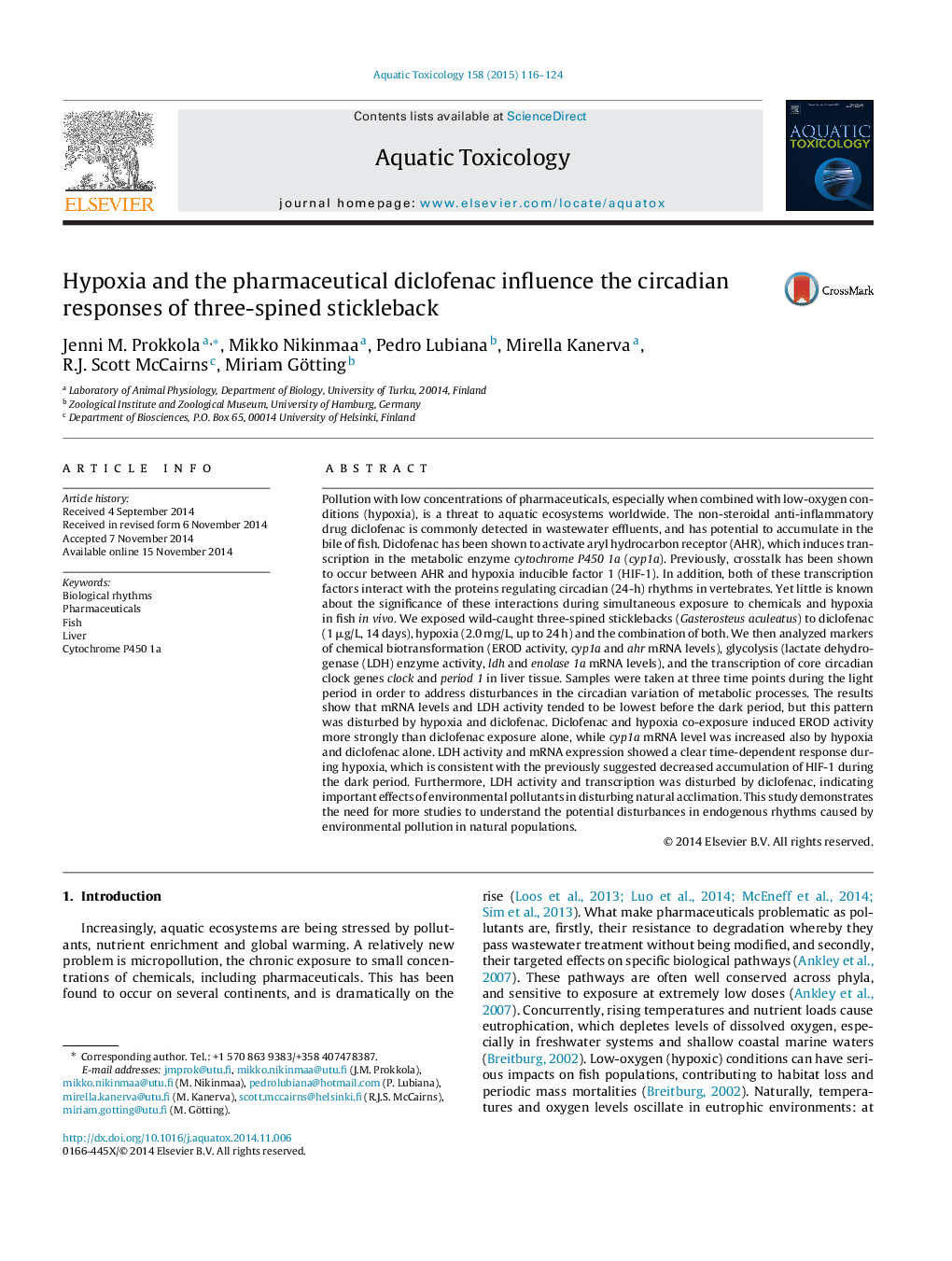| کد مقاله | کد نشریه | سال انتشار | مقاله انگلیسی | نسخه تمام متن |
|---|---|---|---|---|
| 4529243 | 1625947 | 2015 | 9 صفحه PDF | دانلود رایگان |
• LDH and CYP1A enzyme activities show diurnal variation in normoxic fish.
• Circadian clock gene transcription was affected by hypoxia and diclofenac exposures.
• Hypoxia response was disturbed by the pharmaceutical diclofenac.
• Complex interactions between metabolic responses and circadian rhythms in fish.
Pollution with low concentrations of pharmaceuticals, especially when combined with low-oxygen conditions (hypoxia), is a threat to aquatic ecosystems worldwide. The non-steroidal anti-inflammatory drug diclofenac is commonly detected in wastewater effluents, and has potential to accumulate in the bile of fish. Diclofenac has been shown to activate aryl hydrocarbon receptor (AHR), which induces transcription in the metabolic enzyme cytochrome P450 1a (cyp1a). Previously, crosstalk has been shown to occur between AHR and hypoxia inducible factor 1 (HIF-1). In addition, both of these transcription factors interact with the proteins regulating circadian (24-h) rhythms in vertebrates. Yet little is known about the significance of these interactions during simultaneous exposure to chemicals and hypoxia in fish in vivo. We exposed wild-caught three-spined sticklebacks (Gasterosteus aculeatus) to diclofenac (1 μg/L, 14 days), hypoxia (2.0 mg/L, up to 24 h) and the combination of both. We then analyzed markers of chemical biotransformation (EROD activity, cyp1a and ahr mRNA levels), glycolysis (lactate dehydrogenase (LDH) enzyme activity, ldh and enolase 1a mRNA levels), and the transcription of core circadian clock genes clock and period 1 in liver tissue. Samples were taken at three time points during the light period in order to address disturbances in the circadian variation of metabolic processes. The results show that mRNA levels and LDH activity tended to be lowest before the dark period, but this pattern was disturbed by hypoxia and diclofenac. Diclofenac and hypoxia co-exposure induced EROD activity more strongly than diclofenac exposure alone, while cyp1a mRNA level was increased also by hypoxia and diclofenac alone. LDH activity and mRNA expression showed a clear time-dependent response during hypoxia, which is consistent with the previously suggested decreased accumulation of HIF-1 during the dark period. Furthermore, LDH activity and transcription was disturbed by diclofenac, indicating important effects of environmental pollutants in disturbing natural acclimation. This study demonstrates the need for more studies to understand the potential disturbances in endogenous rhythms caused by environmental pollution in natural populations.
Journal: Aquatic Toxicology - Volume 158, January 2015, Pages 116–124
